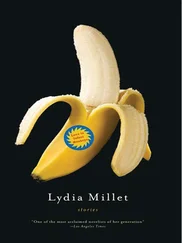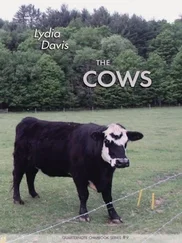“Slim?”
“Very slim, Susan.”
She was silent for a second, biding her time. Then she realized the legalese was oddly erotic. His competence. His knowledge of the probate code. She wanted to get back into bed.
The door was open, though, and outside in the corridor was Casey, sitting impatiently in her chair beneath a woody canopy of fallow-deer antlers.
“You’re not just saying that?” she asked him finally.
“I’m telling you. It’s a long shot at best. It’s frivolous, in my view.”
“Do I have to — then should I do anything?”
“Try to relax.”
Now that the cousins’ decision was made, she saw, it was possible. The lawsuit was actually a relief; she could behave exactly as she wished. No more need to try to impress them, no need to fail so miserably.
She was smiling at the lawyer from the white-lit dust. Motes were adrift in the beam, and floated horizontally.
If you lived in a very beautiful house your life became the house, and like the house the life could acquire a quality of completion. It was something about order, she thought, order and its sufficiency. Before now, she had never seen how the mood of her life was defined by the spaces where she existed. Other people knew this — on one end of the spectrum architects and interior designers, on the other the guys who lived in appliance boxes in alleys — but it had never been so obvious to her.
When she left the house, three days a week on Mondays through Wednesdays, to drive to the office and do T.’s paperwork, she walked out the side door onto the driveway in a familiar path straight across the gravel. She parked the car in the same position every afternoon and so the path to it was always the same in the morning — behind her, as she emerged from the house, thick English ivy and Virginia creeper climbing the mansion wall, lilac bushes on either side of what had once been a service entrance.
To her left as she went out the door was the pool enclosure: the sounds of the fountain, a bird dipping over the water, a flicker at the edge of her eye. To her right was the driveway as it stretched out toward the wide front gate, the straight line of it with a branch curving off to the right, as you moved to the street, to round the front of the house in a semicircle. From where she stood it was mostly a line between grassy expanses, a simple gravel line in the grass. Beyond it rose the hedge that screened her from her neighbors; this was the closest point of contact with the other properties — the towering oleander that guarded them, rising easily eighteen feet, already thick with gaudy pink and red blooms.
Once she pulled through the gate — which was fixed now and glided open before her — and the lush gardens and shady trees were behind her, the gray buzz of the city replaced the oasis. There was the confusion of crowding, sometimes of ugliness: the concrete of overpasses and buildings, air thick with pollution, black and yellow digital signs with words unfurling constantly, velocity and noise, the haphazardness of garbage, the pall of commerce and everyday filth. There was bumper-to-bumper traffic on the freeway, exhaust fumes, the possibility of bad drivers, hostile passersby, sudden accidents, contagious illness, but more overwhelming still than these variables was the slightness and insecurity of her position in space — she could be anywhere, once she was out of the house.
She understood agoraphobics. As soon as she left the perfection of home her location, if not exactly arbitrary, was constantly and sometimes impulsively changing. Her being was subject to the many conditions of wherever she was, the trivial details of her momentary needs; outside the house the sequence of events was chaotic, could not express a clean design. This situation, she realized, was tolerated by most of the five billion people on earth. But more and more she had no idea how they did it — this normal state of mutability and flux, which she had always presumed and often preferred, was not only displeasing but almost unacceptable.
In her old life she’d gone out looking to make things happen because home was a resting place between these happenings; now home was more like a temple, inviting a routine of poise and deliberation. She could move peacefully between the walls as though she walked a neat path in history, as though her time and place were not the product of chance at all but of an ancient arrangement. She lived in the soft footprint of a ceremony. And the longer she lived there, the rarer were the thoughts of the knife. The winces as she expected the blade, awaiting the invisible cut, receded noticeably whereas out in the city she was anyone again. Anyone, to whom anything could happen; anyone, which she had once embraced.
Not anymore.
•
With students from the Art Center — art students whose names she’d found on a bulletin board — she began reorganizing the mounts. Before she had them rehung and restaged she had to encode a new system, and for that she went to a reference librarian who helped her order museum floor plans. She studied the organizing schemes.
There was geography, there was taxonomy, and there was the collection itself, the variety of animals she had and the spaces she needed to house them. She made her own plan according to those needs.
The main part of the ground floor would be given over to North American mammals, each order with its own section. The deer, the bison, the sheep and goats and pronghorns would occupy the great room , as she thought of it now, where previously foxes and wild dogs had slunk along the sideboards. The library would hold the big carnivores — the bears and the cats, the wolves and foxes — while the smaller meat-eaters, the weasels and raccoons, would spill over into a drawing room off the front hall. Rodents would live in the music room, rabbits and hares in the ballroom. Bats fit into an alcove once meant for a telephone and a lone armadillo fit into a display case in the hall, where once a forest of antlers had interrupted the air. She made a reptile room out of the old breakfast nook to house tortoises, alligators and snakes; birds of prey now had the rec room to themselves — the rec room where the lion had stood before it was rudely felled by Addison. Owls perched there, hawks, falcons, eagles and a lone vulture.
She knew the second floor should follow the same principle, but she loved the dioramas. Also the foreign collections were small, with the exception of Africa — Africa, land of safaris, was a horn of plenty, and when the African cats migrated from the ground floor, the gazelles and the zebras along with them, it was clear that the horned beasts room could never fit them all. So she took herself out of it and reinstalled the buffalo and the wildebeest. Two of the art students were mural painters so the wide hallway, too, turned into Africa: out the walls of her former bedroom flowed the grasses and the great lonely flat-topped savannah trees, curling to the right and left as they emerged from the doorway. Long yellow grasses grew up from the hallway floor as they grew in horned beasts, and then, along the hall, ceded the way to wetter and greener terrain as the plain became a jungle. And on the Rainforest walls the art hangers put up a small colobus monkey, an antelope, a spiny lizard, and a gray parrot.
The birds seemed to demonstrate a lack of interest in her personal business, so she put her bed in Birds of the World, which once had been Russia. She had the squat, dun-colored horse and shaggy yak moved, and in the former Soviet Union students painted over Lenin and sketched the lines of treetops in a light sky, arching branches and tree hollows. She watched as the lines were filled in and dimensions came out. On a wooden platform a whooper swan raised its wings; against the wall that faced her bed stood a peacock with its shimmering tail open.
Читать дальше












